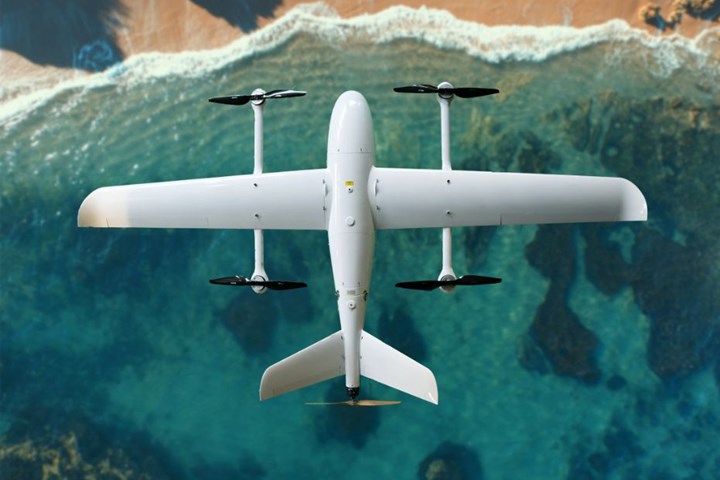H22S project will develop, trial Australia’s first hydrogen-propelled drone
Swinburne’s AIR HUB will bring together industry, research and education for design and integration of a novel hydrogen propulsion system, driving decarbonization, and regulatory and operational developments.
The Hydrogen to the Skies (H22S) project will design and integrate a new hydrogen propulsion system into a large-scale drone — the AIR Hub SHADE drone above — with a first prototype by the end of 2023. Photo Credit: Swinburne AIR Hub
Swinburne University of Technology’s (Victoria, Australia) Aerostructures Innovation Research Hub (AIR Hub), driving innovation in aerostructures and the use of advanced composite materials, is to develop and trial what is said to be Australia’s first hydrogen-propelled drone, thanks to a $1.3 million grant from the Australian government’s Emerging Aviation Technology Partnerships program.
The Hydrogen to the Skies (H22S) project will design and integrate a new hydrogen propulsion system into a large-scale drone, working with Australian partners to help spearhead the commercial development of clean, zero-emissions, uncrewed air systems. The project will demonstrate how hydrogen propulsion can be commercially deployed, paving the way for the regulatory and operational developments needed to better connect regional communities. The first prototype is expected to be completed before the end of 2023.
“With long range, zero carbon emissions and a low noise footprint, hydrogen-powered air vehicles represent the future of environmentally sustainable and socially responsible advanced air mobility [AAM],” Dr. Di Pietro, AIR Hub director, says. He believes the project will have a significant impact on the Australian industry, with potential for millions of dollars in technology export revenue by the early 2030s.
Hydrogen propulsion is projected to be a critical turning point for AAM in regional Australia because it extends range and payload options, compared with pure battery-electric propulsion systems. Moreover, clean and energy-efficient propulsion systems, such as the ones developed by this project, are not only essential in improving regional and remote supply routes but also in meeting Australia’s decarbonization targets.
According to deputy vice-chancellor and research professor, Karen Hapgood, the H22S project connects Swinburne’s research strengths in aerospace, hydrogen and sustainability to fast-track technology which has the capacity to improve the lives of millions.
“This next generation green technology will not only help decarbonize Australia’s aviation industry but will also have positive effects for our regional communities, emergency services and advanced manufacturing sector,” Professor Hapgood adds.
The project continues AIR Hub’s work on Small Hydrogen Aircraft Development & Evolution (SHADE) and is expected to bring together industry, research and education. AIR Hub will work with industry partners to bring H22S to life, including collaborating with Swinburne’s Victorian Hydrogen Hub (VH2) on green hydrogen production and storage.
Ultimately, it is envisaged as the first phase of a strategic aviation initiative to position Australia as an early entrant and global leader in hydrogen propulsion and the technology’s regional application.
Related Content
-
Polar Technology develops innovative solutions for hydrogen storage
Conformable “Hydrogen in a Box” prototype for compressed gas storage has been tested to 350 and 700 bar, liquid hydrogen storage is being evaluated.
-
Composites end markets: Batteries and fuel cells (2024)
As the number of battery and fuel cell electric vehicles (EVs) grows, so do the opportunities for composites in battery enclosures and components for fuel cells.
-
NCC reaches milestone in composite cryogenic hydrogen program
The National Composites Centre is testing composite cryogenic storage tank demonstrators with increasing complexity, to support U.K. transition to the hydrogen economy.
















